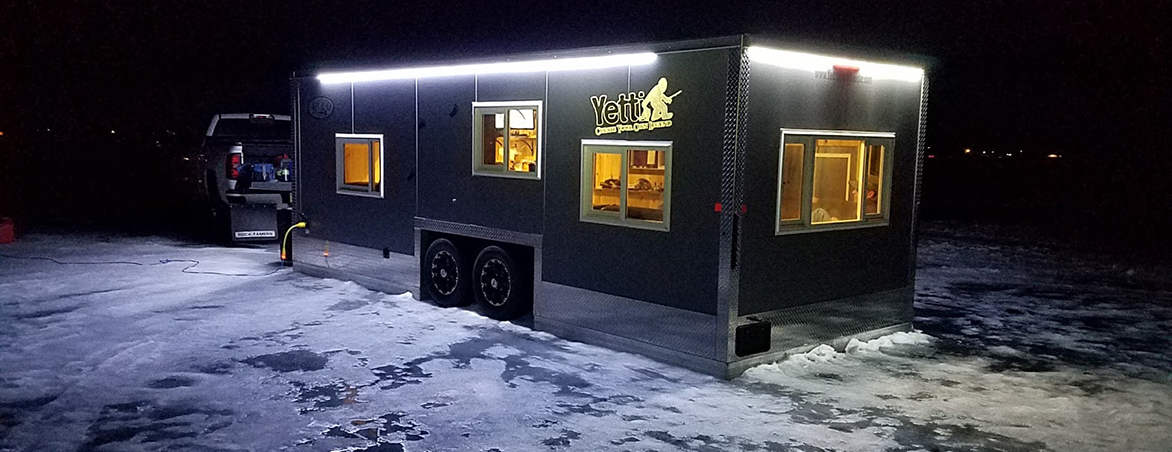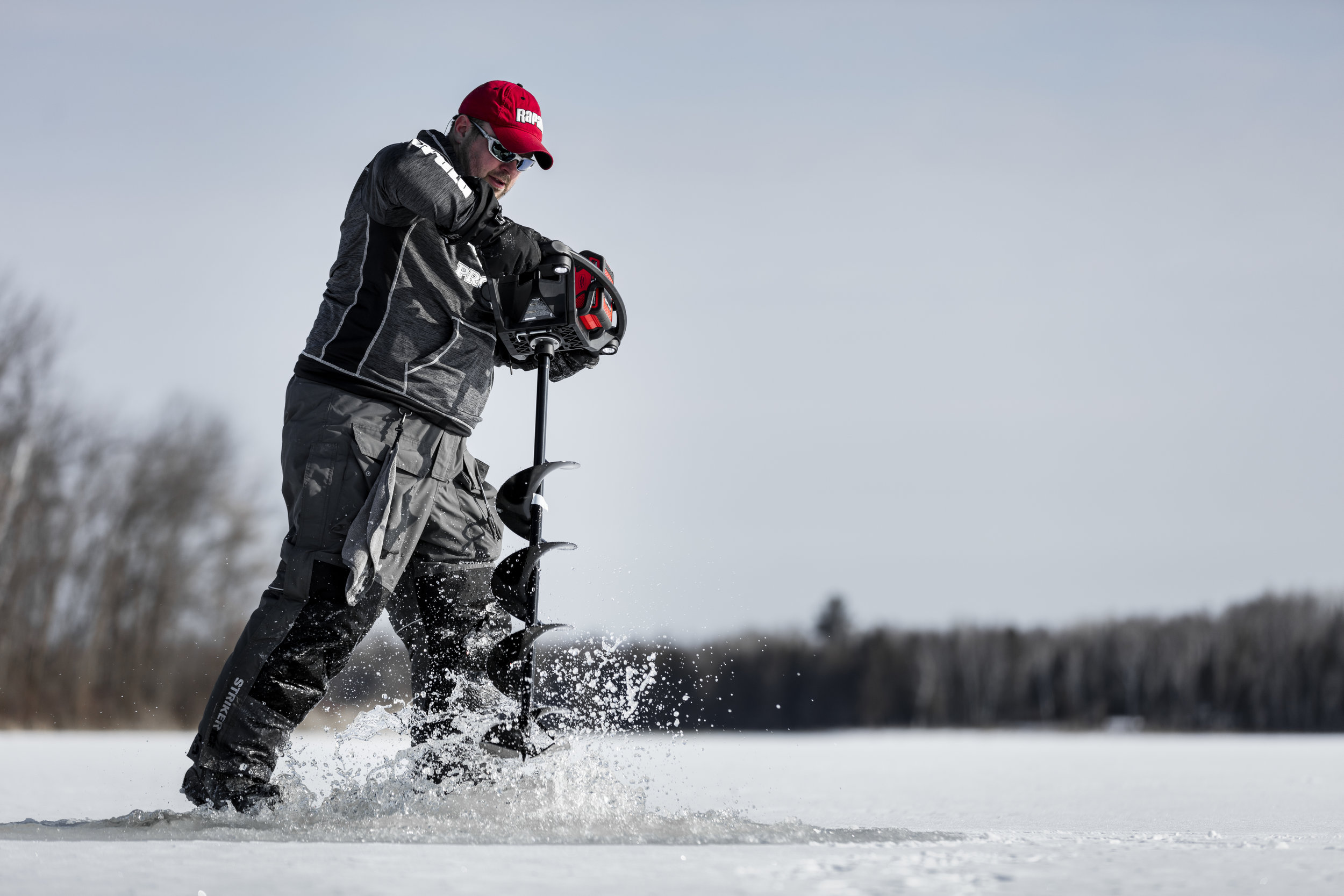A good generator, and 30-amp electrical hookup with a 15-amp converter aren't the first thing you think of after buying a wheelhouse, but you need power to fish!
Photo Credit - Matt Addington Photography
You Bought a Wheelhouse – Now What?
I’m an over-planner. I simply have to “over-do” it to be confident in performing about any outdoor task, but even I was surprised at how much preparation can go into equipping your wheelhouse. I know from experience that just as a properly rigged boat catches more fish, any time on the hard water is best served with a healthy dose of preparedness. That said, with a wheelhouse, the fishing portion of the planning is just the beginning. You’ll sleep out on the ice with this unit, making it as much a Recreational Vehicle (RV) as it is a fish-house. Yet, with the fact that this house will sit on a sheet of frozen ice, camper kits or RV-lists won’t fully equip you either. Here are some sure-fire ways to be ready for everything, along with a list of what you might not have thought of.
Exterior
First think about all of the operating mechanicals that go on regarding the exterior of your wheelhouse. Start from the hitch and go to the tail, thinking about both trailering and dropping the house. You may need a drop hitch to properly balance your load. Consider a fully adjustable one with multiple ball sizes such that you’ve always got it attached to your tow vehicle and you’ll never need to find a specific one for just your wheelhouse. You’ll need everything from bolts, wire, and a full set of tools with which to help wield those extras. You’ll also need a trailering kit, which is a simple plastic tub filled with a grease gun, shop towels, a 4-way tire wrench to change a flat, and a hub kit. Pass on the bearing kits themselves and instead elect to replace the entire hub should you smoke a bearing in sub-zero temps.
Don’t forget extra pins, especially the trailering ones, as these love to get lost in the snow. Bring a chisel and jack to help out in the event of a freeze-down, wood blocks to prevent freeze-down, and a shovel to help bank snow around the exterior. Consider a small propane torch should your door be prone to freeze-up with all the hot-to-cold created condensation. Last but not least, throw in a head lamp or two should you have to fix anything in the dark.
Heat and power are a requirement on the open ice, so make sure your propane tanks are full (and fully operational), and that you throw a portable generator into the truck as well. There are lots of generator options out there, but keep in mind that sub-zero running may require a cold-weather kit. A few gallons of gas may be needed to keep that generator running too, depending on your power needs.
Fishing
Most modern houses come equipped with Catch-Covers, but you’ll need to purchase the hole-sleeves that form the connection between that open area in the floor and the ice-sheet itself. Dedicated rattle reels for every hole are nice, but so are rod holders. These days, you don’t have to choose as there are several aftermarket options that allow you to mount a simple receiver disk to a wall, then slip in and out a rattle reel or rod holder of your choice.
Of course you’ll need tackle, rod and reel combinations, and ice electronics. Remember that electronics need a power source, so bring chargers, and also RCA or HDMI cable(s) to connect your underwater camera to the TV. Many houses these days come with pre-wired in-wall connections for this. Along those same lines, think about aeration of your bait cooler, and how you will both store and use bait for your stay.
The Best of the Rest
Depending on your wheelhouse, the rest of the list is not meant to be exhaustive or full of “must-haves.” It’s simply some ideas to get your mind headed in the right direction as you plan.
· Cooking – Dedicated pots, pans, dishes, silverware, seasonings, pizza pan, tinfoil, coffee pot, toaster, fillet knife, and cutting boards
· Safety – Carbon-monoxide/smoke-detector, first aid kid, indoor/outdoor thermometer, and a ladder for bunks
· Organization – storage baskets that fit in specific drawers and shelves, key ring hanger by the door, coat hooks for hanging items everywhere, and stackable totes for the bathroom area
· Clean-up – Paper towel-holder, towel bar, toilet paper holder, area rugs, and a broom/dust pan with door clamp or holder for storage
· Fun – Playing cards, board games, and movies
· “Hacks” – Squeegee for cleaning floors after drilling holes, non-glazed ceramic tiles to line the inside bottom of the oven to prevent burning, 2” memory foam sleeping pads for extra comfort, corner shelves to make use of nooks and crannies especially near sleeping areas, and ceiling storage helpers to hold anything flat or low-profile like rulers, rods, etc.
Of course, with necessity being the mother of all invention, you could always just head out fishing with a notepad and pen to document what you’d want and when you’d want it. Hopefully, this is a great head-start and you can refine to your own personal tastes from here.





